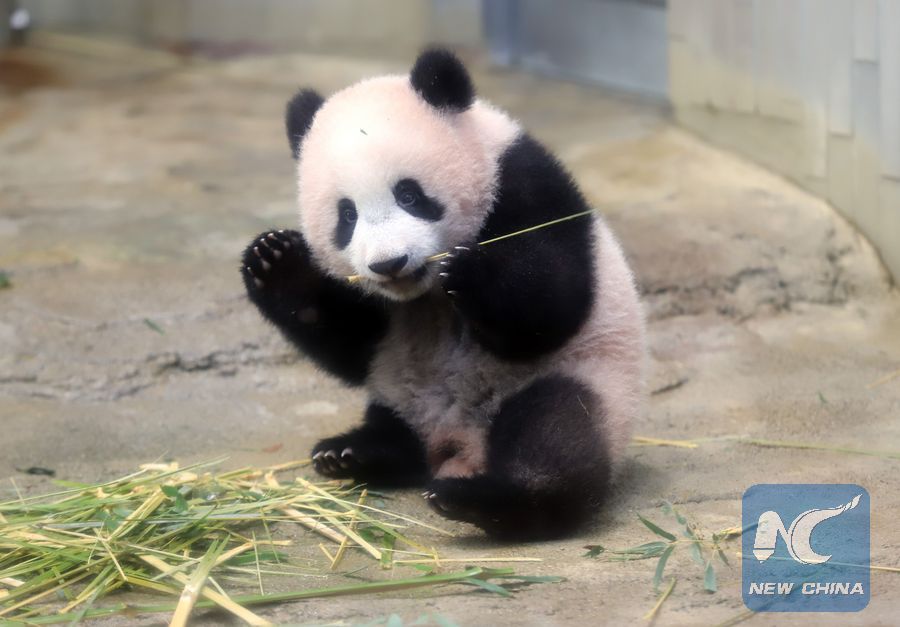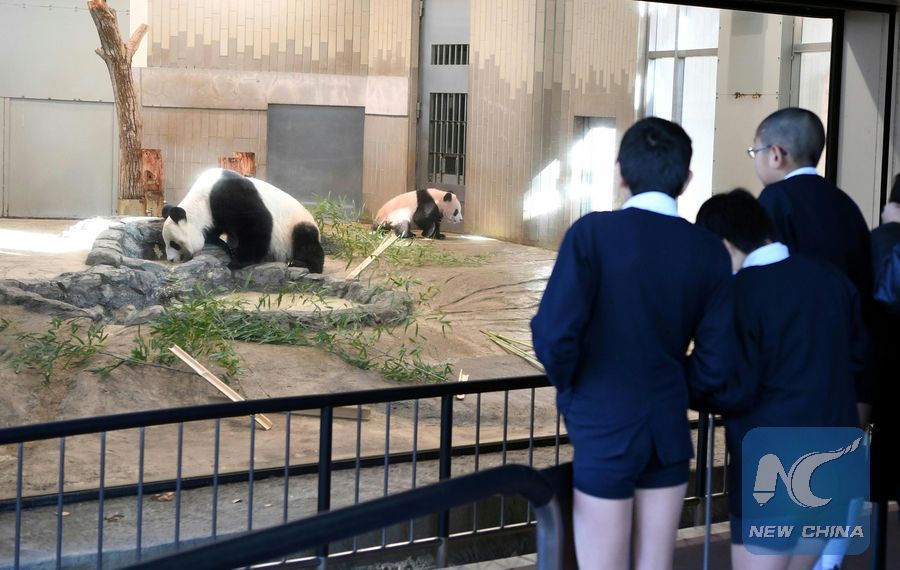
Photo taken on Dec. 18, 2017 shows giant panda cub Xiang Xiang at Tokyo's Ueno Zoological Gardens, Japan. (Xinhua)
TOKYO, July 12 (Xinhua) -- In the Ueno region of Japan's Tokyo, the love for giant pandas is palpable. From stylish food to plush dolls, and from manhole covers to lovely cartoons on restaurants' walls, images of pandas can be seen everywhere which have demonstrated the Ueno Zoological Gardens' special connection with the Chinese animal.
As early as 1972, the zoo had formed an indissoluble bond with pandas. Kang Kang and Lan Lan, the zoo's first pair of giant pandas, were given to Japan by the Chinese government in October 1972, Toshimitsu Doi, former director of Ueno Zoological Gardens, told Xinhua.
"There was a 'China fever' in Japan," Doi said, adding that the arrival of Kang Kang and Lan Lan was a historic moment for the zoo. So many Japanese people went to Haneda airport and the Ueno zoo to see the pandas that police cars had to clear way out from the airport to the zoo. The number of visitors to the Zoological Gardens hit a record high of 9.2 million in 1973.
In the memory of ordinary Japanese, the Ueno zoo is the starting point of Japan's affection for giant pandas. Since then, Huan Huan, Fei Fei, Ling Ling and other giant pandas have come to the zoo.
"Every time China's giant pandas came here, it became a big event," Doi said. "Every one of them has become a big star."
Many visitors have to queue for at least 90 minutes to see the giant pandas at the zoo's panda house, evidently indicating the pandas' popularity.
Takahiro Takauji, a Japanese web designer, is dubbed "panda watcher" by Japanese media. For seven years, he has been visiting the zoo every day to take photos of pandas, rain or shine, and also posted the pictures on his blog. "I first saw pandas in 2011 and it was 'love at first sight'," he quipped.
When it comes to star animals in the Ueno zoo now, giant panda cub Xiang Xiang is definitely one of them. Xiang Xiang made her public debut in December 2017, the first time the zoo has exhibited a panda cub in 29 years.

Students look at giant panda cub Xiang Xiang (R) and her mother Fairy (Japanese name Shin Shin) at Tokyo's Ueno Zoological Gardens, Japan, Dec. 18, 2017. (Xinhua/Ma Ping)
Japanese people came from all over the country to see the fluffy cub when they heard the news. In order to cope with the large number of visitors, the zoo had to select 2,000 lucky ones each day by drawing lots.
The zoo celebrated Xiang Xiang's second birthday on June 12 with special activities.
Despite an agreement with Beijing that the panda cub is due to return to China 24 months after her birth, the Tokyo metropolitan government has thrilled many fans by extending Xiang Xiang's stay in Japan and announcing that she will remain in Tokyo until the end of next year.
Since the birth of Xiang Xiang, the zoo has seen a steady growth in visitors and a marked increase in the number of joining members of panda conservation societies.
Doi, who became the president of the Panda Protection Institute of Japan after stepping down as the director of the zoo, not only worked to publicize the knowledge of giant panda protection, but also arranged trips of the association members to pandas' habitats in southwest China's Sichuan province for research and exchanges.
Giant pandas are "friendship envoys" that help promote understanding and exchanges between the two peoples of Japan and China, Doi said.

